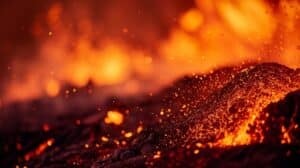
Refractory anchors are specialized fasteners that are used to secure refractory materials, such as bricks, castables, and ceramics, to the structures of high-temperature equipment. This includes furnaces, kilns, boilers, and other thermal processing equipment. Made from materials that can endure extreme heat without losing their mechanical properties, refractory anchors are critical for maintaining the structural integrity of refractory linings under severe conditions.
One primary purpose of refractory anchors is to provide stability and support to the refractory lining. In high-temperature environments, refractory materials can experience thermal expansion and contraction. Without proper anchoring, these materials may crack, shift, or become dislodged, leading to reduced efficiency and potential equipment failure. Refractory anchors ensure that the lining remains securely in place, allowing it to effectively insulate and protect the underlying structure from extreme heat.
Refractory anchors play a crucial role in distributing loads across the refractory lining. In many high-temperature applications, the refractory material must bear the weight of itself as well as any additional loads from the process or equipment. By effectively distributing these loads, refractory anchors help prevent localized stress points that could lead to premature wear or catastrophic failure.
The design of refractory anchors often takes into account the need for efficient thermal conductivity management. Anchors made from materials with low thermal conductivity help minimize heat transfer between the refractory lining and the underlying structure. This is vital in maintaining the thermal efficiency of the system and preventing heat loss, which can lead to increased energy costs and decreased operational efficiency.
In many industrial applications, refractory linings are exposed to corrosive environments, including chemicals, gases, and molten materials. Refractory anchors are designed to be resistant to these corrosive agents, ensuring that they maintain their structural integrity over time. This resistance is essential not only for the longevity of the anchors themselves but also for the overall performance and lifespan of the refractory lining.
Refractory anchors are engineered for ease of installation, which is crucial in the often-constrained environments of industrial settings. Their design allows for quick and efficient installation, minimizing downtime during maintenance or repairs. Additionally, many refractory anchors can be easily accessed and replaced without the need for extensive dismantling of the equipment, further enhancing maintenance efficiency.
Refractory anchors are utilized in a wide range of high-temperature applications, including:
Refractory anchors are a fundamental component of high-temperature systems. They serve a vital purpose in ensure the integrity, efficiency, and longevity of refractory linings. At RAI, we are committed to providing high-quality refractory anchors that meet the rigorous demands of various industrial applications. By understanding the purpose of refractory anchors and the role they play, industries can make informed decisions about their refractory linings. Ultimately leading to improved operational performance and reduced maintenance costs.